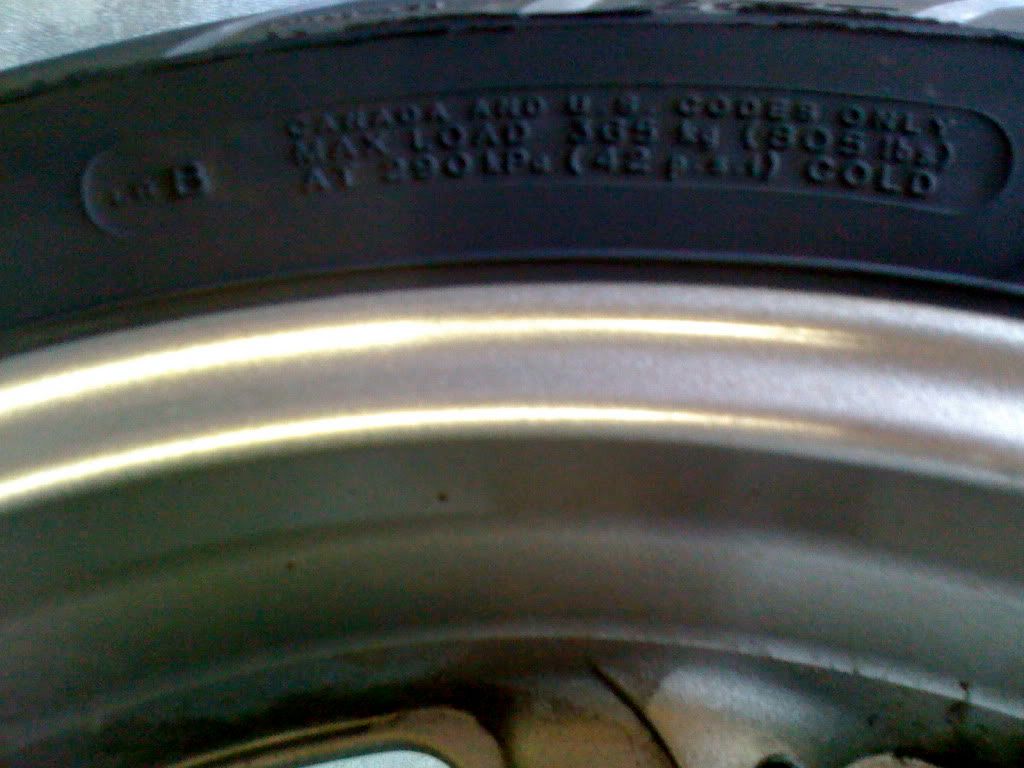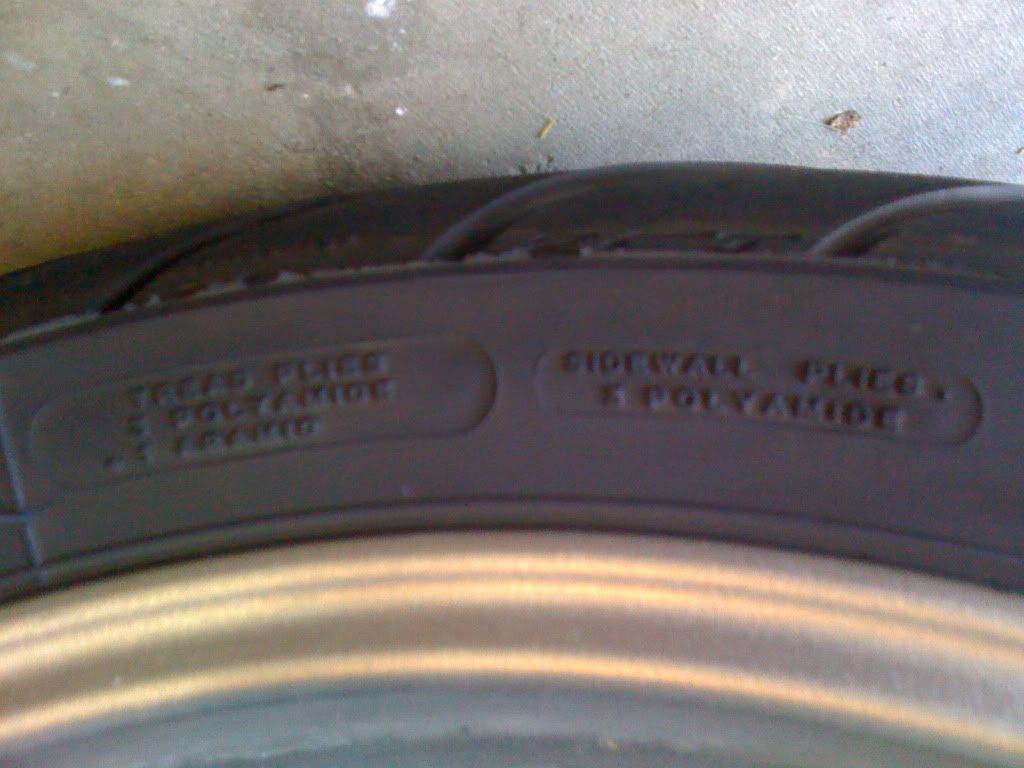Adding my experience to this old thread. I did a search online (including this forum) regarding the PR2s and apparent lack of balance marking. Several people called or wrote to Michelin and the official response was that they do not measure, nor mark the light (or heavy) spots on any of their tires. Well that sucks.
I mounted my rear PR2 randomly. I happen to know that my rear wheel is light by 20 grams exactly at the valve stem. Makes it easy to keep track of. After I inflated the new tire and seated the tire beads I stuck it on the balancer and it took 52 grams to get it balanced, exactly at the valve stem. :glare: So I must have been so lucky to exactly put the tire's light spot at the rim's light spot... :angry:
I didn't feel like breaking the bead on the new tire and rotating the tire on the rim, so unless I have balance problems I'll just run it with two strips of 3 stick on weights plus a 10 g crimp on weight on the wheel.
After the rear fiasco I decided to try aligning the known heavy spot on the wheel with the bar code on the tire. When I balanced the wheel it took only 21 grams of wheel weights and the location was not at the rim's light spot. This is certainly not conclusive, but seems to support the idea that the barcode is the light spot.
By the way, I had a hell of a time spooning on the back tire (non-B spec), but the front one went on like greased lightening. It was one of the few times I have been able to just lube the rim (soapy water) and shove the entire first bead on with no tools. Then the second bead went on very easily too.
Also, for those wanting to use (and re-use) stick on wheel weights, I have a system that works pretty well. First off, before sticking the weights on permanently, find their location by holding them on with a piece of duct tape. Once you know where you're gonna want them permanent like, clean the rim with a good solvent first Goof Off (not Goo Gone) works well.
Then, replace the ****** foam double sided sticky stuff on new weights (or old ones) with this stuff:
3M Auto Trim tape. You can get it in the big box auto stores in the perfect 1/2" width for sticking wheel weights on. It sticks
very well, and when it's time to peel the old ones off the adhesive is pretty easy to remove.
































































